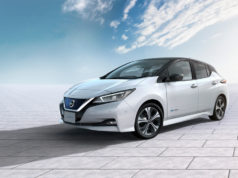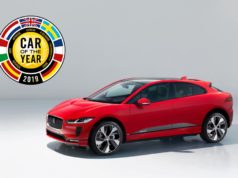What is a premium experience like in a self-driving car? Audi is researching this in collaboration with the Fraunhofer Institute for Industrial Engineering IAO. In the futuristic driving simulator, the experts on human-machine interaction investigated. For example, how the car interior can become a perfect workplace. The findings help the car maker to provide every user with a personally optimised automobile interior in the future. This research cooperation is part of the Audi project “25th Hour.”
“When cars no longer have a steering wheel, premium mobility can be newly defined. In future, people travelling from A to B will be able to surf the Internet at leisure, play with their children – or do concentrated work,” says Melanie Goldmann, head of Culture and Trends Communication at Audi. “We want to find out what is important for making optimal use of time in a self-driving car.”
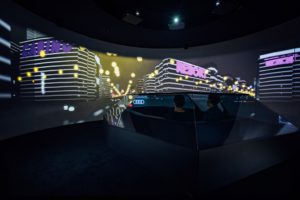 For the laboratory experiment at the Fraunhofer Institute in Stuttgart, Audi has specially built a driving simulator that reproduces the situation of automated driving
For the laboratory experiment at the Fraunhofer Institute in Stuttgart, Audi has specially built a driving simulator that reproduces the situation of automated driving
It is with a variable interior and without a steering wheel. Large-scale projections convey the impression of a city drive by night. Via displays, the researchers can introduce digital distractions, while the windows can be dimmed, and the colour of the lighting and noise background change.
The focus was on young test persons, so-called millennials, who were born after 1980 and are regarded as receptive to self-driving cars. In the experiment, the 30 test persons carried out various tasks requiring concentration, which is comparable with a work situation in a self-driving car.
Different measures applied during all that. The included brain activity (EEG), reaction times and error quotas, as well as subjective impressions. The results of the EEG were unambiguous. They showed better relaxation in an environment without disturbances. The windows were dimmed, the light settings optimised, and digital messages were suppressed. Then people solved better and more quickly different tasks. The test persons also stated less distraction.
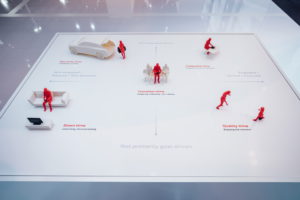 By contrast, a driving situation that was “close to reality” in the robot car made greater demands on the brain. In this case, the participants saw some advertising, received information from social networks, and did not benefit from pleasant lighting settings or dimmed windows.
By contrast, a driving situation that was “close to reality” in the robot car made greater demands on the brain. In this case, the participants saw some advertising, received information from social networks, and did not benefit from pleasant lighting settings or dimmed windows.
“The results show that the task is to find the right balance. In a digital future, there are no limits. We could offer everything in the car – really overwhelm the user with information,” says Goldmann. “But we want to put people at the centre of attention. The car should become a smart membrane, while the right information should reach the user at the right time.”
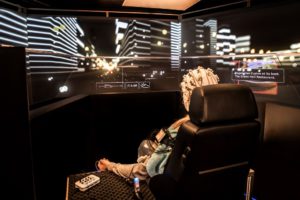 The “25th Hour” project of Audi
The “25th Hour” project of Audi
Today drivers spend an average of about 50 minutes per day at the wheel. In the 25th Hour project, Audi is investigating how people could use better this time in a self-driving automobile. The base of the project is the assumption that an intelligent human-machine interface will learn the user’s individual preferences and adapt flexibly. In this way, Audi customers will gain full control of their time, i.e. they will be masterful time managers.
In a first step, the project team looked at people in Hamburg, San Francisco, and Tokyo, focusing on two aspects. How do people use infotainment in the car today? And what would people like to do with their free time in the car of the future? Then a variety of experts discuss the results. And they include psychologists, anthropologists, and urban and mobility planners.
 In a second step, the Audi team defined three time modes that are conceivable in a self-driving car
In a second step, the Audi team defined three time modes that are conceivable in a self-driving car
They are quality time, productive time, and time for regeneration. In so-called quality time, people spend their time, for example, in activities with their children or telephoning family and friends. In productive time, they usually work. Reading, surfing the Internet, or watching a film happens in down time they relax.
To research these time modes further, Audi recruited the help of scientists from the Fraunhofer Institute. In the current research series, the team is principally concentrating on productive time.

What do you think – which rock star belongs in which Audi? #NationalRocknRollDay #rockstar pic.twitter.com/YptJcilsDr
— Audi (@Audi_Online) July 9, 2017























